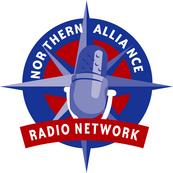
« Air Force Investigating Alternative Fuels | Main | One Sick Child Away From Being Fired »
Joseph Shahda has uncovered another document of interest from the files of intelligence captured by US forces during the fall of Saddam Hussein. This document addresses a still-controversial topic -- the mobile laboratories cited by Colin Powell as one of Saddam's WMD capabilities and discovered during the 2003 invasion. Later investigators determined these trailers to be hydrogen-gas production facilities although some experts still dispute that conclusion.
The document translated by Shahda does not provide many details itself, but does show that the project for which the labs were built attracted high-level interest for equipment supposedly only suitable for meteorological research:
Beginning of the translation of page 1In the name of God the Most Merciful the Most Compassionate
Presidency of the Republic
Military Industrialization Commission
Ibn Rushd General Company
Number 10025611018
Date 11/11/2002
To: Military Industrialization Commission/Department of Projects
Subject: Investment Plan for the year 2003
In regards from the letter singed with you on 12/10/2002 regarding our company investment plan to the year mentioned above, included is the technical report according to the letter showing its details below:
1. Develop and enlarge existing laboratories, 178,000,000 Dinars
2. Prepare MOBILE LABORATORIES , In Iraqi Dinar 128,413,00 + 273,445 Euros with 10 Dinar/Euro, 27,344,500, 155,757,500 Dinars.
Total 333,757,500 Dinars
Remark: The cost of the vehicles related to the Mobile Laboratories is not determined yet.
Please review and do what is necessary… with regards
Attachements:
1.Table fof quantity+ The plan related of developing the Laboratories
2.
Signature…
Noor Al Din Abed Al Hadi
The General Director
11/11/2002
End of translation of page 1
Partial translation of page 2
Table of electrical equipments and devices of the Mobile Laboratory
Partial translation of page 3
Table of electrical equipments and devices of the Mobile Laboratory
Measurement device for the speed of vibration
Measurement device for the speed of rotation
Ultrasonic wave test device
Different pressure measurement devices
Mobile testing device for metals
X-Ray testing device
20 Kilovolt electric generator
End of partial translation of page 3
Nothing in this document says anything explicit about chemical or biological weapons. However, some disquieting indicators exist that tend to argue against the weather-balloon explanation we have so far heard about the trailers. First and foremost, the Military Industrialization Committee was not just an ordinary procurement board for the Saddam regime. It had primary responsibility for the Iraqi WMD program before the Gulf War, and presumably afterwards as well. Its director, Abdul Tawab el-Mullah Howeish held the position of Deputy Prime Minister, a Cabinet-level position.
Global Security explains:
Iraq Television reported on 4 May 2002 that Saddam Husseyn had chaired a meeting where he listened to briefings by "joint working teams" on unspecified scientific and technical questions. Iraqi TV broadcast the news in an unscheduled summary. Saddam was reported to have commended the efforts of the teams. He was quoted as saying: "My assessment of you is always 100 percent. My assessment of you as people, commanders, and fighters, is also 100 percent. Therefore we will defeat the enemy. This is our determination and confidence in our battle. Rely on God." The meeting was also attended by Saddam's second son, Qusay, described as member of the Iraq Command of the Arab Socialist Baath Party and supervisor of the Republican Guard. Others attending were: Deputy Prime Minister and Minister of Military Industrialization Abdul-Tawwab Huwaish, Defense Minister Staff-General Sultan Hashim Ahmad, Minister of Industry and Minerals Muyassar Raja Salah, and director of the Atomic Energy Commission, Dr. Fadil al-Janabi. The commander of the air force, the commander of air defense, the dean of the Military Engineering College, the vice chairman of the Military Industrialization Organization, and "a large number of fighters, researchers, and technicians in various specialities were also there.
That meeting took place six months before this order for the manufacture and delivery of these laboratories, ordered by the ministry in charge of WMD and at the same time that the US had demanded action against Saddam Hussein for his defiance of sixteen previous resolutions for disarming and accounting for his previously-held WMD. The order itself seems out of place for a country preparing for a military invasion on the scale promised by the US. Why would the Iraqi military need to create hydrogen for weather balloons in the middle of an invasion?
If that looks strange, then the components of the labs look even more odd. Hydrogen production should not require precise measurements for rotation and vibration or an X-ray tester. It seems even more odd when the cost of these laboratories is considered. In the first place, this order actually refers to both mobile and fixed laboratories, demanding that 178 million Iraqi dinars get spent on enlarging the existing fixed facilities. It then orders the purchase of the mobile laboratories at a cost of 333 million dinars. At the exchange rate set by Saddam, that would have equaled about $1 billion in US dollars. However, the memo appears to acknowledge economic reality by showing an exchange rate of 10 dinar per Euro, which at the time traded close to the US dollar. That puts the mobile labs ordered by the agency responsible for WMD efforts at around $33 million dollars.
That seems like a lot of money for hydrogen production, especially for a nation preparing for a full-scale military invasion. Something is full of hot air, and it doesn't appear to be Iraqi weather balloons. (h/t: CQ reader Jeff R.)
UPDATE AND BUMP: The comments section has interesting input from CQ readers. Mike O has some practical experience in biological work:
I spent 8 years growing Bacillus subtilis in deep tank culture and can attest that those mobile systems could have been- and probably were- used to growl Bacillus anthraces, the anthrax oraganism. While most systems would use filtration and/or incinerators on the exhaust system, a compression system would have the advantage of eliminating near-site detection (no smell of fermentation).Hydrogen is generally produced via anaerobic processes, so the oxygen tanks would be unnecessary. The nitrogen and the chiller both could be used to enhance final sporulation, since the spores are the stable form that can be weaponized.
Professor Dave has a perspective on the conventional explanation for these mobile systems:
Generating H2 on site can be done. It was the customary way to get the H2 for balloons for a century or so. However, I'd surprised if anyone does it that way today. Today it is much easier to just fill a pressure cylinder from a H2 plant and transport the cylinder. It strikes me as pretty lame to suggest that H2 isn't available in a country that has a substantial petroleum industry. H2 is used in refineries in huge quantities. The amount needed for weather balloons wouldn't even be as much as the leaks in a refinery.
The Iraqi oil industry still continued to operate under sanctions; in fact, Saddam used it to generate billions of dollars for his own use. If hydrogen is as plentiful a byproduct of refining as Professor Dave indicates, which this seems to support, then it is hard to imagine that Iraq needed on-site hydrogen generation with its associated expense and danger.
Perhaps these labs had some benign purpose, but hydrogen production doesn't make much sense. Nor does having your military spend $33 million on the purchase of civilian mobile laboratories while the world's remaining superpower is signaling that it will invade your country.
UPDATE II, 7/8/06: The $33 million combined the two line items. That is a questionable assumption, as the second line item specifically calls out the mobile labs, while the first appears to specify existing fixed labs. I'd feel more comfortable saying that the Iraqis allocated $15.5 million for the mobile labs. The question then becomes how many they expected to produce under this plan. We found two, which implies that each trailer cost over $7.5 million. Other documents released this week indicate that they may have planned for as many as seven, which would put the cost at well over $2 million -- still extremely expensive for mobile hydrogen generation.
Sphere ItTrackback Pings
TrackBack URL for this entry is

captain*at*captainsquartersblog.com


My Other Blog!
E-Mail/Comment/Trackback Policy
Comment Moderation Policy - Please Read!
Skin The Site








Hugh Hewitt
Captain's Quarters
Fraters Libertas
Lileks
Power Line
SCSU Scholars
Shot In The Dark
Northern Alliance Radio Network
Northern Alliance Live Streaming!



Des Moines Register
International Herald Tribune
The Weekly Standard
Drudge Report
Reason
The New Republic
AP News (Yahoo! Headlines)
Washington Post
Guardian Unlimited (UK)
New York Times
Los Angeles Times
OpinionJournal
Pioneer Press
Minneapolis Star-Tribune
MS-NBC
Fox News
CNN

Design & Skinning by:
m2 web studios
blog advertising

- dave on Another National Health Care System Horror Story
- brooklyn on Hillary Not Hsu Happy
- rbj on Hillary Not Hsu Happy
- Robin S on Requiem For A Betrayed Hero
- Ken on Hillary Not Hsu Happy
- Robin S. on Requiem For A Betrayed Hero
- RBMN on Hillary Not Hsu Happy
- NoDonkey on Another National Health Care System Horror Story
- Robin Munn on Fred Thompson Interview Transcript
- filistro on When Exactly Did Art Die?










